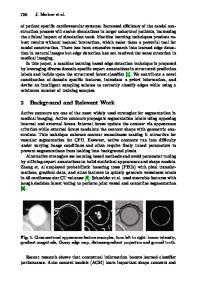Patient-Specific Modeling of the Cardiovascular System Technology-Dr
Patient-Specific Modeling of the Cardiovascular System demonstrates the design of a variety of patient-specific models within the cardiovascular system and how they could be applied on a larger scale in the clinic. Patient-specific modeling will lead to a
- PDF / 9,370,265 Bytes
- 253 Pages / 439.37 x 666.142 pts Page_size
- 33 Downloads / 313 Views
Roy C.P. Kerckhoffs Editor
Patient Specific Modeling of the Cardiovascular System Technology-Driven Personalized Medicine
Editor Roy C.P. Kerckhoffs University of California San Diego Department of Bioengineering 9500 Gillman Drive La Jolla, CA 92093-0412 USA [email protected]
ISBN 978-1-4419-6690-2 e-ISBN 978-1-4419-6691-9 DOI 10.1007/978-1-4419-6691-9 Springer New York Dordrecht Heidelberg London Library of Congress Control Number: 2010933851 © Springer Science+Business Media, LLC 2010 All rights reserved. This work may not be translated or copied in whole or in part without the written permission of the publisher (Springer Science+Business Media, LLC, 233 Spring Street, New York, NY 10013, USA), except for brief excerpts in connection with reviews or scholarly analysis. Use in connection with any form of information storage and retrieval, electronic adaptation, computer software, or by similar or dissimilar methodology now known or hereafter developed is forbidden. The use in this publication of trade names, trademarks, service marks, and similar terms, even if they are not identified as such, is not to be taken as an expression of opinion as to whether or not they are subject to proprietary rights. Printed on acid-free paper Springer is part of Springer Science+Business Media (www.springer.com)
Foreword Peter Hunter
Computational physiology for the cardiovascular system is entering a new and exciting phase of clinical application. Biophysically based models of the human heart and circulation, based on patient-specific anatomy but also informed by population atlases and incorporating a great deal of mechanistic understanding at the cell, tissue, and organ levels, offer the prospect of evidence-based diagnosis and treatment of cardiovascular disease. The clinical value of patient-specific modeling is well illustrated in application areas where model-based interpretation of clinical images allows a more precise analysis of disease processes than can otherwise be achieved. For example, Chap. 6 in this volume, by Speelman et al., deals with the very difficult problem of trying to predict whether and when an abdominal aortic aneurysm might burst. This requires automated segmentation of the vascular geometry from magnetic resonance images and finite element analysis of wall stress using large deformation elasticity theory applied to the geometric model created from the segmentation. The time-varying normal and shear stress acting on the arterial wall is estimated from the arterial pressure and flow distributions. Thrombus formation is identified as a potentially important contributor to changed material properties of the arterial wall. Understanding how the wall adapts and remodels its material properties in the face of changes in both the stress loading and blood constituents associated with inflammatory processes (IL6, CRP, MMPs, etc.) is a major challenge for this field and one that calls on a robust framework for multiscale modeling (see below) as well as the detection of blood biomarkers that provide fu
Data Loading...











